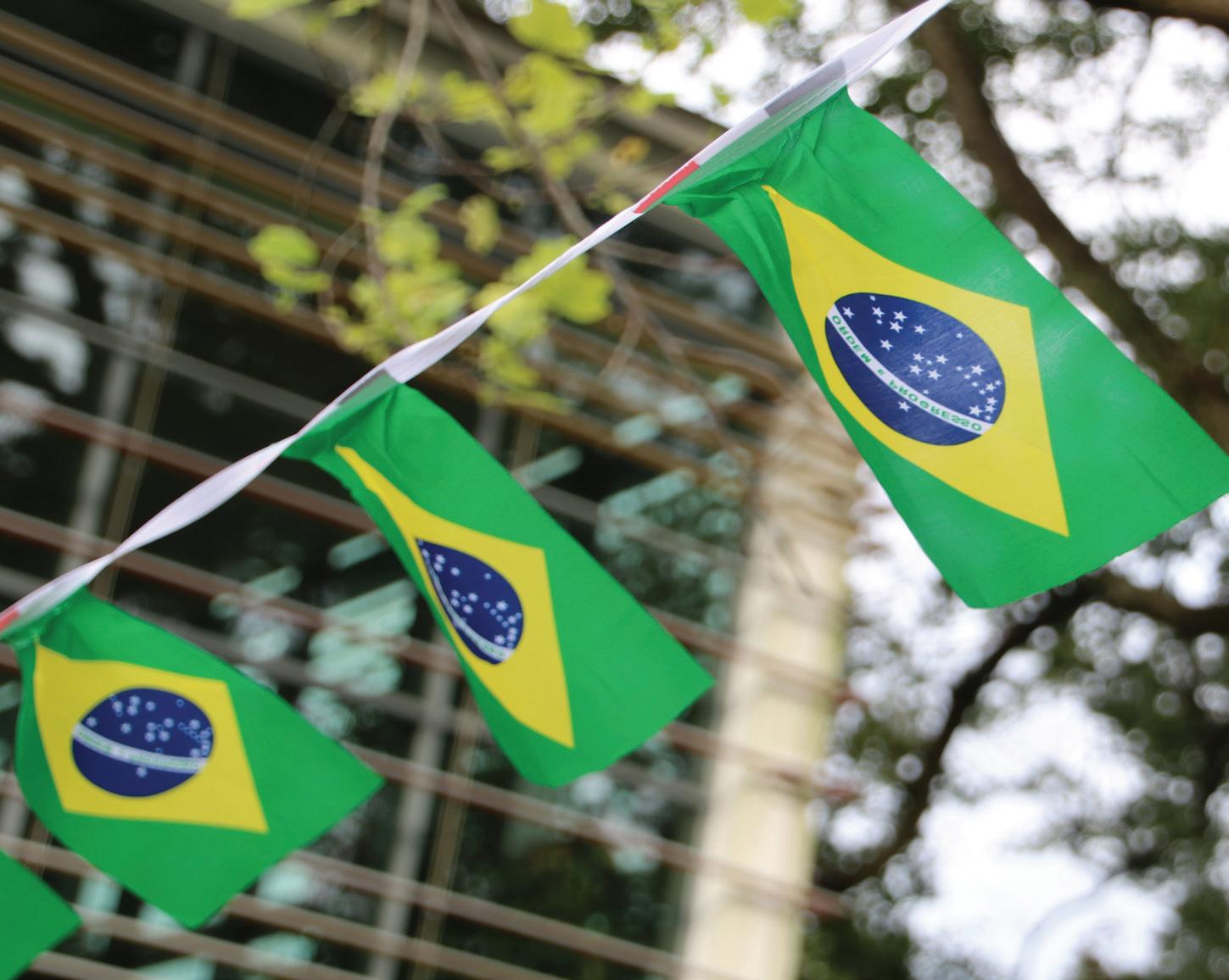
4 minute read
A CENTER FOR BRAZILIAN SCHOLARSHIP
BY ANNIE McNEILL GIBSON (PhD ’10) ADMINISTRATIVE ASSOCIATE PROFESSOR DIRECTOR OF STUDY ABROAD
New Orleans is often referred to as the northernmost city of the Caribbean. As such, researching and teaching at Tulane offers many moments to draw connections between our city and Latin America. We often think about these connections first in relationship to Spanish-speaking Latin America given that Spain had sovereign control over New Orleans in the 18th century. Tourists visiting the French Quarter see the Cabildo, the municipal hall that dates to this period of Spanish colonial rule and various plaques and monuments throughout the city commemorate more recent relationships with Latin America, most notably the statues of Simon Bolívar, Benito Juárez, and Francisco Morazán Quesada along Basin Street. Other landscape elements such as the Spanish-language signage along Williams Boulevard in North Kenner, an area just a few miles beyond New Orleans, manifest the dynamic Latino communities that are a part of the city’s more contemporary history and character.
Advertisement
The 2010 census revealed that the Latino population as a whole has more than doubled in New Orleans since Hurricane Katrina in 2005. However, an important and often overlooked enclave within this Latino community in New Orleans is the Brazilians. By the nineteenth century, the networks that linked New Orleans to ports around the Gulf of Mexico and the Caribbean also extended south of the equator to Brazil. From this point until Hurricane Katrina, a special commercial connection led to the establishment of a small Brazilian community. Brazil was a major supplier to the New Orleans coffee industry, with Louisiana Coffee and Spice Mills marketing the guarantee on its packaging that its Lunch Bell brand contained “pure Rio,” referenc-
ing the allure and seductiveness of Rio de Janiero in its coffee beans. Currently, about a quarter of all coffee imported to the U.S. still comes from Brazil—the supplier to nearly a third of the world’s coffee—and enters the country through the Crescent City.
It was not until the extensive flood damage of Hurricane Katrina, however, that New Orleans became a crucially important part of the story of the “New Latino South,” a term used to describe booming contemporary Latino migration to the Southern U.S. in the early 2000s. Researchers have sometimes referred to Brazilians as an “invisible minority” in the U.S. due to restrictive census definitions of the term Latino along with language and cultural differences. Exact statistics of the number of Brazilians who arrived in the aftermath of Katrina are difficult to confirm, though calculations from Brazilian churches, the itinerant consulate, and social media tracking seem to indicate that between 7,000-9,000 Brazilians arrived to rebuild the city after the storm. Today, the number of Brazilians is close to 4,000 in the greater New Orleans area.
I was recently reminded of the interconnectedness of research on Brazil at Tulane and our local Brazilian community in 2019 when the Latin American Library hosted the Amazônia Ocupada exhibition, featuring the work of Brazilian photographer João Farkas. Farkas documented the mass migration of workers throughout Brazil who came to the Amazon basin in the 1980s and 1990s to try their luck in gold mining, logging, and cattle ranching. The international attention given to environmental degradation in the in the Amazon basin, the lack of productive markets for the pioneer settlers who resettled in Rondônia from Southern Brazil as part of the migration wave, and subsequent policies to save
the rainforest that put restrictions on their cattle farming, were all motivating factors in an undocumented immigration network that went from Colorado do Oeste, Rondônia, and actually led to New Orleans, Louisiana. While Farkas’ photographs concentrated on the Amazon Basin, I had heard stories of this migration from children of these workers who left the Amazon region for work in New Orleans post-Katrina. Immigrants from Colorado do Oeste, Rondônia began describing New Orleans as the next El Dorado in post-storm reconstruction, and today, New Orleans, and its suburb Chalmette in particular, is home to one of the main communities of Rondônians living in the U.S. These Brazilian storm chasers left the Amazon for the U.S. seeking more productive markets to support their families, and are now a part of the hybridity that is New Orleans and the Gulf South’s cultural identity.
These connections between Brazil and New Orleans emerge in immigration patterns, music, and ethnic and racialized categories in our local city politics, making Tulane an exciting place to be a Brazilianist. Tulane has long been a prominent center for research and teaching on Brazil, having offered Portuguese language courses since 1947 and a Brazilian Studies degree program since 1999. Next year the University will begin its prestigious five-year term as the secretariat of the Brazilian Studies Association (BRASA). The Brazilian community in New Orleans offers opportunities for scholars at Tulane to explore how real people living in our communities participate in the creation of specific places and hemispheric networks that link New Orleans to Brazil.









